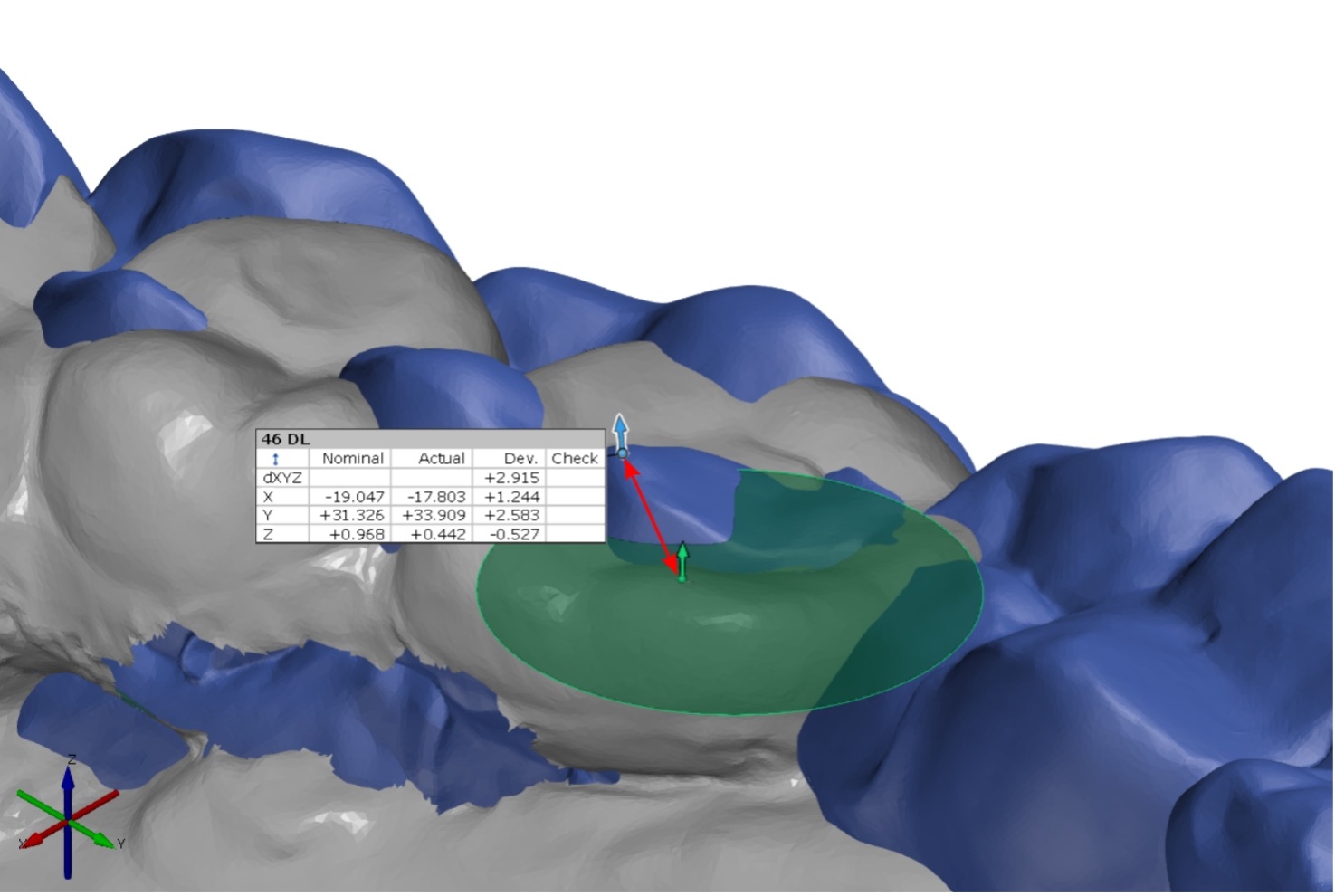IADR Abstract Archives
Occlusal Accuracy Assessment in Mandibulectomy Patients: a Metrological Pilot Study
Objectives: This pilot study aims to establish a methodological metrological protocol for evaluating occlusal variations in prosthetic rehabilitation on dental implants in mandibulectomy cancer patients who have undergone reconstruction with a free fibula flap, following the principles of Prosthetically Guided Maxillofacial Surgery (PGMS).
Methods: The occlusal differences between natural and prosthetic teeth were assessed using the following metrics:
- Positional Variation of Cusps: variation in the positions of tooth cusps. (Tab. 1)
- Positional Variation of Teeth: variation in the centroid of cusps of each tooth. (Tab. 2)
- Rotational Variation of Teeth: variation in the inclination of tooth long axes. (Tab. 3)
Four analysis methods were evaluated, based on different definition of the occlusal surface reference planes, and the most suitable one was selected based on repeatability testing and execution time. The deviations were measured, focusing on molar and premolar cusps. In both pre-operative and post-operative digital models (3D scans) the cusp vertex is defined as the highest point as seen on the occlusal surface reference planes. The positional variation (Δ) is calculated as the distance between corresponding cusps vertex using spatial coordinates. All measurements were conducted using GOM Inspect software. (Fig. 1)
Results: This pilot study revealed significant differences in the mean Δ-value of cusp positions between natural (0.827 mm) and prosthetic teeth (2.958 mm). There were also notable differences in the mean Δ-value of teeth between natural (0.505 mm) and prosthetic teeth (2.705 mm). Additionally, prosthetic teeth exhibited a higher rotation angle of the long axis (up to 51.112°) compared to native teeth (2.743° maximum).
Conclusions: This metrological protocol enables the detection of even minute functional variations in occlusal contacts between pre-operative and post-operative states. It proves valuable for evaluating the accuracy of prosthetic rehabilitation in mandibulectomy cancer patients who have undergone PGMS reconstruction with a free fibula flap.
Methods: The occlusal differences between natural and prosthetic teeth were assessed using the following metrics:
- Positional Variation of Cusps: variation in the positions of tooth cusps. (Tab. 1)
- Positional Variation of Teeth: variation in the centroid of cusps of each tooth. (Tab. 2)
- Rotational Variation of Teeth: variation in the inclination of tooth long axes. (Tab. 3)
Four analysis methods were evaluated, based on different definition of the occlusal surface reference planes, and the most suitable one was selected based on repeatability testing and execution time. The deviations were measured, focusing on molar and premolar cusps. In both pre-operative and post-operative digital models (3D scans) the cusp vertex is defined as the highest point as seen on the occlusal surface reference planes. The positional variation (Δ) is calculated as the distance between corresponding cusps vertex using spatial coordinates. All measurements were conducted using GOM Inspect software. (Fig. 1)
Results: This pilot study revealed significant differences in the mean Δ-value of cusp positions between natural (0.827 mm) and prosthetic teeth (2.958 mm). There were also notable differences in the mean Δ-value of teeth between natural (0.505 mm) and prosthetic teeth (2.705 mm). Additionally, prosthetic teeth exhibited a higher rotation angle of the long axis (up to 51.112°) compared to native teeth (2.743° maximum).
Conclusions: This metrological protocol enables the detection of even minute functional variations in occlusal contacts between pre-operative and post-operative states. It proves valuable for evaluating the accuracy of prosthetic rehabilitation in mandibulectomy cancer patients who have undergone PGMS reconstruction with a free fibula flap.

